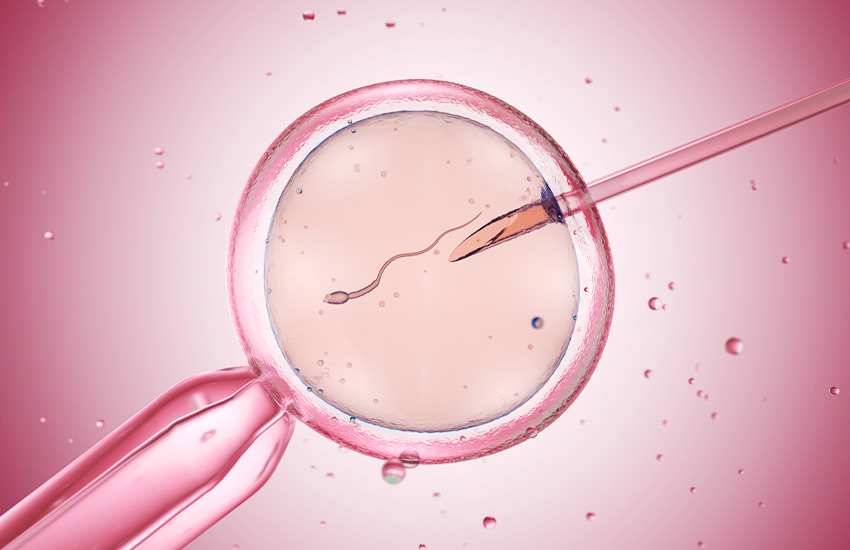Understanding the IVF Journey Step by Step

Are you considering IVF treatment or just curious about how it works? Understanding the IVF journey can feel overwhelming, but it’s essential to know what to expect.
IVF, or in vitro fertilisation, is a process that involves several carefully managed steps, each designed to optimise your chances of conception. The journey begins with understanding how your body naturally recruits and selects eggs and then moves through various stages such as down regulation, ovarian stimulation, egg retrieval, fertilisation, and embryo transfer.
In this blog, we will walk you through each stage of the IVF journey, from the initial egg recruitment to the crucial two-week wait after embryo transfer. Our goal is to provide you with a clear and concise overview, explaining each step in a way that is easy to understand. By the end, you’ll have a better grasp of what IVF entails and what you can expect during this transformative process.
The Natural Egg Recruitment Process
In a natural menstrual cycle, your body produces 15-20 eggs each month, but only one egg is selected to mature and be released during ovulation. With IVF, the aim is to conserve all these matured eggs to increase the chances of conception. This involves stimulating your ovaries so that multiple eggs mature at once, which are then collected and fertilised with your partner’s sperm in a lab. This process maximises the number of eggs available for fertilisation, significantly enhancing the chances of a successful pregnancy.
Down Regulation
Down regulation is the first step in the IVF process and involves temporarily suppressing your natural menstrual cycle. This is achieved using medications called GnRH agonists or antagonists, which help to ‘quieten’ the ovaries. This step usually starts in the luteal phase of your menstrual cycle. The purpose of down regulation is to prevent the premature release of eggs and to control the timing of ovulation, allowing for better management of the subsequent stages of IVF.
Ovarian Stimulation
Once down regulation is achieved, the next step is ovarian stimulation. This involves taking fertility medications, typically follicle-stimulating hormone (FSH) and luteinising hormone (LH), to encourage your ovaries to produce multiple eggs. Throughout this process, your response to the medications is closely monitored with blood tests and ultrasound scans to track the growth and development of the follicles. When the follicles have reached the appropriate size, a trigger shot of human chorionic gonadotropin (hCG) is administered to induce the final maturation of the eggs, preparing them for retrieval.
Egg Retrieval
Once your eggs have matured, the next step is egg retrieval, a minor surgical procedure. This is typically performed under sedation or anaesthesia to ensure your comfort. Using ultrasound guidance, a thin needle is inserted through the vaginal wall into each ovary to aspirate the fluid and eggs from the follicles. After the procedure, you will be monitored for a short period to ensure there are no immediate complications. Simultaneously, your partner will provide a semen sample, which will be processed to isolate healthy sperm for fertilisation.
Fertilisation Process
After the eggs and sperm are collected, the fertilisation process begins. This can be done using the traditional method, where eggs and sperm are placed together in a dish to allow natural fertilisation, or via Intracytoplasmic Sperm Injection (ICSI), where a single sperm is directly injected into each egg. Once fertilised, the embryos are monitored for a few days to track their development. The best-quality embryos are then selected for transfer into the uterus, or they can be frozen for future use, depending on your treatment plan.
Embryo Transfer
The embryo transfer is a quick and relatively painless procedure. Using a thin catheter, the fertility specialist will carefully transfer the selected embryos into your uterus through the cervix, often guided by ultrasound to ensure precise placement. After the transfer, you’ll be advised to rest for a short period. It’s important to follow all medication instructions provided by your doctor to support the embryo implantation and maintain a healthy environment for potential pregnancy. Avoid strenuous activities and follow your specialist’s advice closely during this crucial time.
The Two-Week Wait
After the embryo transfer, you enter the two-week wait, the period between the transfer and the pregnancy test. This time can feel long and stressful, as you wait to find out if the transfer was successful. About 10-14 days after the transfer, you will take a pregnancy test to detect the hormone hCG, which indicates pregnancy. During this waiting period, it’s crucial to focus on self-care: rest, maintain a positive outlook, and seek support from your healthcare team and loved ones. Following your doctor’s instructions and avoiding strenuous activities will help create the best environment for a potential pregnancy.
Conclusion
Navigating the IVF journey can be complex and emotionally challenging, but you don’t have to go through it alone. Consulting with fertility specialists can provide you with the personalised care and support you need. At Fyne IVF, we are dedicated to helping families through expert fertility solutions. We understand the intricacies of the IVF process and are committed to guiding you every step of the way. Our team of experienced professionals will ensure you receive the highest standard of care, from your initial consultation through to the two-week wait and beyond.
We offer a comprehensive range of services, including fertility evaluation, various treatment options, fertility preservation, special treatments, and counselling. Our goal is to make the IVF journey as smooth and stress-free as possible for you. We aim to assist you in making your dream of parenthood a reality.